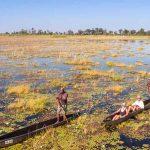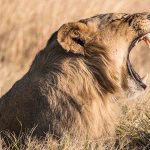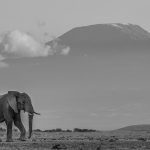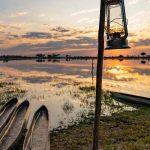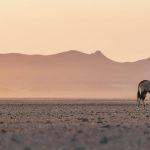Any safari to the North of Tanzania should include a visit to Ngorongoro Crater.
Voted in 2013 as one of the Seven Natural Wonders in Africa, Ngorongoro Crater is situated within the Ngorongoro Conservation Area, which is itself a protected area and a world heritage site. It is in fact, one of Africa’s most famous sites.
Lush Grasslands and Plentiful Water
Only 180km from Arusha, the Ngorongoro Crater is one of the largest intact volcanic caldera in the world. The crater ranges between 16 to 19 km in diameter, with the walls of the crater varying in height between 400 meters and 600 meters high. The floor of the Crater is 260 square kilometres and comprises a number of different habitats. These include lush grassland, swamps, forests and Lake Makat (Maasai for ‘salt’) – a central soda lake filled by the Munge River. The Lerai Stream drains the forests to the south of the Crater, feeding the Fever trees(Acacia xanthophloea) in the Lerai Forest on the crater floor.
The other major water source in the crater is the Ngoitokitok Spring that is situated near the eastern crater wall. In this area there is a picnic site open to tourists, adjacent to the huge Gorigor Swamp that is fed by the spring. Here visitors can enjoy lunch in the company of large numbers of hippos that call this swamp home. The walls of the crater are comprised of montane forest on the steep, eastern walls and Euphorbia trees on the western boundaries. Only once you visit the Ngorongoro Crater, will you understand why it is such a strong candidate for any list of the world’s greatest natural wonders.
Geological Splendour
The Crater is renowned for its geological splendour, but it is primarily famous as a natural reserve. The Ngorongoro is home to some of the densest, large mammal populations found anywhere in Africa. Boasting numbers of up to 25,000 large mammals, a trip to Ngorongoro Crater is guaranteed to offer spectacular sightings.
Because of the enclosed nature of the crater, it gives the impression of being a natural enclosure for most of the game that reside in that area and has almost formed its own ecosystem. However this is not the case, as almost 20% of the Wildebeest population and 50% of the Zebra population vacate the crater during the rainy season. During this time the reverse happens, with Eland and Buffalo and herd numbers increase with the rainy season.
The spectacular mineral-rich bowl that forms the floor of the crater, produces lush and nutritious grasses. These attract ungulates such as Buffalo, Thompson and Grants Gazelles, Zebra, Wildebeest, Waterbuck and Eland. But it is not only grazers and the crater is also home to East Africa’s best population of Black Rhino. Breeding herds of Elephants are occasionally seen passing through the crater, but it is the large Elephant bulls residing within the area that attract attention. These bulls are considered to be some of the biggest tuskers left in the Africa today. Unfortunately Giraffe and Impala are not present in the Crater and this is possibly due to a lack of open woodland favoured by these species.
Habituated Lions
As one would imagine, such a large population of herbivores will attract large populations of predators. The Ngorongoro Crater has one of the densest known population of Maasai lions. But numbers have varied over the years, due to the effects of the Natural Enclosure. This can reduce the amount of traversing between areas available to the male lions and makes them more susceptible to diseases. Due to the large number of ever-present vehicles, the lions have become habituated to the presence of game drive vehicles. As a result, they will hunt in close proximity to vehicles or even take advantage of the shade provided by the vehicles!
Spotted Hyaenas are very common here and they are often seen competing with Lions for their hard-earned kills. The numbers of Cheetah in the Crater are growing and Leopards are seen occasionally too, while the elusive Serval is a common sight in the crater. Jackals are spotted following the Lion prides for whatever scraps they can scavenge and Bat-eared Foxes are a rare treat!
The only down side is the numbers of other vehicles and tourists that you will encounter. Every visitor to Tanzania wants a glimpse of this amazing natural wonder and the diversity of game within its confines.

